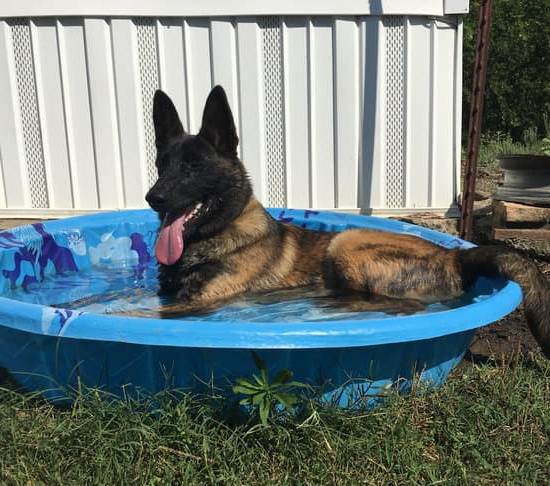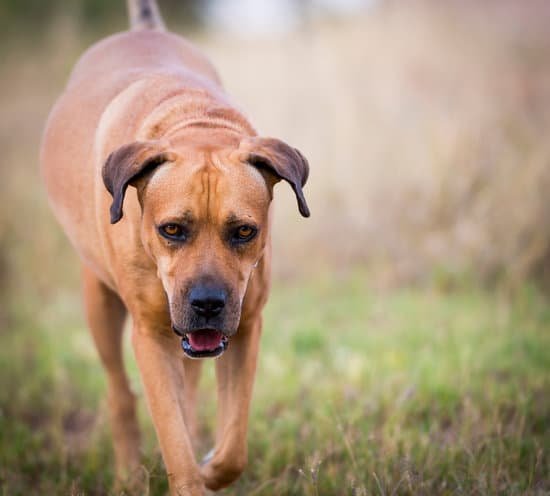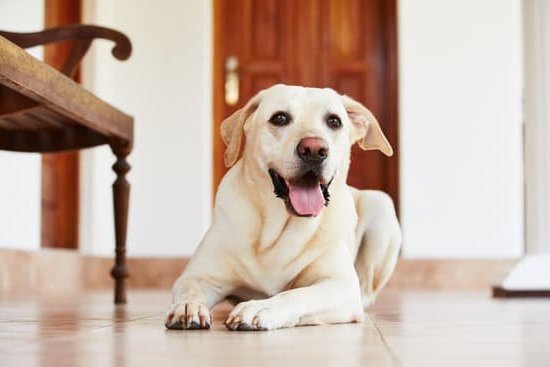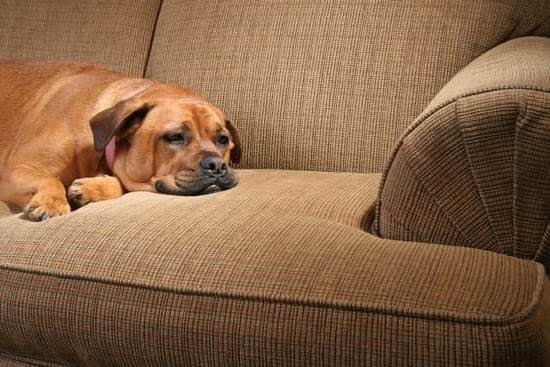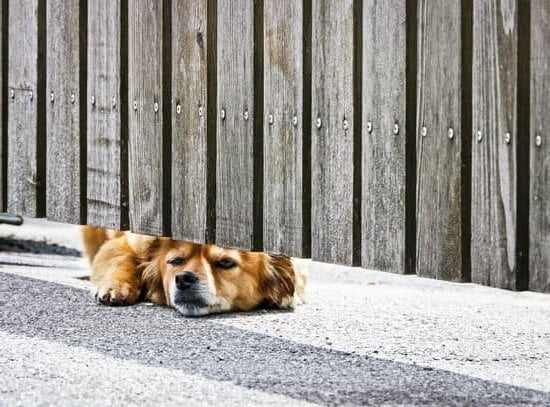Potty training is an essential part of raising a well-behaved and happy dog. It not only prevents accidents in the house but also plays a crucial role in shaping a dog’s behavior and promoting their overall well-being. While many traditional methods use crate training as the foundation for potty training, there are alternative approaches that can be just as effective, offering dog owners more flexibility and options.
In this article, we will explore the question, “Can you potty train a dog without a crate?” and delve into various techniques that can help achieve successful potty training without relying on confinement.
Properly potty trained dogs have the freedom to roam indoors without constant supervision or confinement. They develop self-control, independence, and demonstrate good habits that positively influence their behavior outside of bathroom routines. Potty training also fosters a strong bond between dogs and their owners through effective communication and positive reinforcement.
While crate training is widely recognized as an effective method for potty training, it may not be suitable for every dog or owner. Some dogs may become anxious or stressed when confined to a crate, leading to setbacks in the potty training process.
Therefore, exploring alternative methods becomes imperative to find what works best for your specific dog’s needs. By understanding your dog’s natural instincts and implementing consistent routines with positive reinforcement techniques, you can successfully potty train your furry friend without relying on a crate.
In the following sections, we will discuss various factors involved in potty training without a crate, such as understanding your dog’s behavior, establishing a routine, managing accidents effectively, troubleshooting common challenges, gradually reducing dependence on a crate, and ultimately achieving complete independence from it. By utilizing these strategies tailored to your individual pet’s needs and temperament, you can navigate the potty training journey with patience and success while fostering a strong bond with your canine companion.
The crate training method
What is crate training?
Crate training is a popular method for potty training dogs and involves using a crate as a designated space for the dog to rest and sleep in, while also being a tool for potty training. The idea behind crate training is that dogs have an instinct to keep their sleeping area clean, and by confining them to the crate when not supervised, they are less likely to have accidents inside the house.
This method utilizes the dog’s natural instincts and helps establish a routine for potty breaks.
The benefits of crate training
Crate training offers several benefits when it comes to potty training your dog. It provides structure and boundaries, ensuring that the dog understands where they should go to relieve themselves. Additionally, crates can be a safe haven for dogs, giving them their own space where they can feel secure. Crate training also facilitates travel and vet visits as dogs who are comfortable in crates may experience less stress during these situations.
Moreover, crate training promotes consistency in the potty training process. By creating a routine of taking the dog out at specific times and immediately after being let out of the crate, owners can establish good habits efficiently. Furthermore, crates can be useful in preventing accidents when owners cannot supervise their dogs, such as during sleep or when leaving home temporarily.
However, it is important to note that while crate training can yield effective results for many dogs, it may not suit every individual or owner’s preferences. Some owners may be seeking alternative methods that do not involve using a crate or may find that their dog becomes anxious or stressed when confined in a crate. In such cases, exploring other options for potty training without a crate may be necessary.
Exploring alternative methods
When it comes to potty training a dog, crate training has long been considered the go-to method. However, not every dog owner may feel comfortable or want to use a crate for potty training their furry friend. The good news is that there are alternative methods available that can be just as effective in achieving successful potty training without the use of a crate.
One such alternative method is the confinement area approach. Rather than confining the dog to a small crate, this method involves designating a specific area within your home that will serve as your dog’s “potty zone.”
This area could be an unused room, a corner of the laundry room, or even a sectioned-off part of your backyard. The key is to make sure this space is easily accessible for your dog while also being easy to clean up if accidents occur.
Another option is using puppy pads or litter boxes specifically designed for dogs. These provide an indoor space where your dog can relieve themselves without the need for a crate. Puppy pads and litter boxes are especially ideal for small breeds or apartment living where access to outdoor areas may be limited.
Additionally, there are various types of indoor grass patches available that mimic the outdoors and allow your dog to do their business on something more natural. These grass patches are typically low-maintenance and can be cleaned easily, making them a convenient option for potty training without a crate.
It’s important to note that whichever alternative method you choose, consistency and routine are still key factors in successful potty training. Just like with crate training, it’s essential to establish designated times for bathroom breaks and reward your dog when they eliminate in the appropriate spot. Positive reinforcement techniques such as praise, treats, or toys should also be incorporated into your potty training routine.
| Methods | Description |
|---|---|
| Confinement area | This method involves designating a specific area within your home where your dog can relieve themselves without being confined to a crate. |
| Puppy pads or litter boxes | Using specially designed pads or litter boxes as an indoor bathroom option for your dog, ideal for small breeds or apartment living. |
| Indoor grass patches | Mimicking outdoor surfaces, these low-maintenance patches allow your dog to relieve themselves on something more natural while still indoors. |
Understanding your dog’s behavior
Understanding your dog’s behavior is crucial when potty training without a crate. By analyzing their natural instincts, you can leverage these instincts to create a successful potty training routine. Dogs have an innate desire to keep their living spaces clean, which can be used to your advantage during the potty training process.
One instinct that dogs possess is the desire to eliminate away from their sleeping and eating areas. This instinct can be used to guide them towards designated potty spots in your home or yard. By consistently taking your dog to the same spot every time they need to go, you are reinforcing this natural instinct and teaching them where it is appropriate to eliminate.
Another important behavior to understand is a dog’s need for routine and predictability. Dogs thrive on consistency, so establishing a set schedule for potty breaks can greatly assist in their potty training progress. Create a specific routine that includes regular outdoor trips after meals, playtime, waking up, and before bedtime. Consistently adhering to this schedule will help your dog understand when it is appropriate to go outside and reduce the likelihood of accidents inside the house.
Additionally, recognizing signs that indicate when your dog needs to eliminate is essential for successful potty training without a crate. Common signs include pacing, sniffing around, circling, or suddenly leaving a room. When you notice these behaviors, promptly take your dog outside or lead them to the designated potty spot indoors.
To further enhance understanding of your dog’s behavior during potty training without a crate, consider using visual cues such as putting down pee pads or utilizing scent attractants in designated areas. These cues help communicate clearly with your dog where they should go and reduces confusion.
By studying and understanding your dog’s behavior and instincts during the potty training process without relying on a crate, you are setting them up for success while promoting positive reinforcement techniques that strengthen the bond between you and your furry friend.
Establishing a routine
Setting a consistent potty training routine is crucial for successfully training a dog without using a crate. While crate training often helps establish a routine, it is definitely possible to create a schedule that doesn’t rely on confinement. Here are some step-by-step guidelines to help you establish a routine:
- Determine the ideal potty times: Observe your dog’s behavior and identify the times when they usually need to relieve themselves. This may include first thing in the morning, after meals, and before bedtime.
- Choose a designated spot: Select an outdoor area where you want your dog to go potty. It should be easily accessible and away from high-traffic areas.
- Set regular potty breaks: Take your dog to the designated spot at regular intervals throughout the day. Start with more frequent breaks (e.g., every 1-2 hours) and gradually increase the time between breaks as your dog begins to understand the routine.
- Use verbal cues: Teach your dog a specific command or phrase that signals it’s time to go potty. Consistently use this cue every time you take them outside to reinforce understanding.
- Monitor closely: During potty breaks, closely supervise your dog and watch for signs that they need to eliminate, such as sniffing or circling.
- Encourage and reward: When your dog successfully eliminates in the designated spot, immediately praise them with enthusiasm and offer treats or rewards as positive reinforcement for good behavior.
- Keep an eye on indoor accidents: Although accidents may happen during the training process, it’s important not to scold or punish your dog for them. Instead, clean up accidents thoroughly without drawing attention to them.
- Be patient and consistent: Establishing a routine takes time and effort, so be patient with your furry friend’s progress. Consistency is key – stick to the established schedule every day until your dog has fully grasped the routine.
By following these steps, you can create a consistent potty training routine that doesn’t rely on the use of a crate. Remember to be patient, provide positive reinforcement, and celebrate your dog’s successes along the way.
Consistency is key
Creating a Consistent Routine
One of the most crucial aspects of potty training a dog without using a crate is establishing a consistent routine. Dogs thrive on structure and predictability, so it is important to create a schedule that includes regular bathroom breaks throughout the day. By consistently taking your dog outside or to their designated potty area at scheduled times, you are helping them learn when and where it is appropriate to relieve themselves.
Timing is Everything
Timing plays a significant role in successful potty training without a crate. Understanding your dog’s natural bathroom habits and cues will help you anticipate when they need to go. Pay close attention to signs such as sniffing around, circling, or pacing, as these are often indications that your dog needs to eliminate.
Be sure to take your dog out immediately after waking up from a nap, after eating or drinking, and before bedtime. Additionally, having designated bathroom breaks every few hours throughout the day will reinforce the routine and prevent accidents.
Consistency in Rewards
In addition to being consistent with bathroom breaks and timing, it is equally important to be consistent with positive reinforcement techniques when potty training without a crate. When your dog eliminates in the appropriate spot, lavish them with praise, pets, and treats – whatever motivates them most. This positive reinforcement will not only encourage good potty habits but also associate going outside with enjoyable rewards.
However, if accidents happen indoors, it’s important not to scold or punish your dog. Negative reinforcement can create anxiety or fear associated with bathroom behavior and hinder the potty training process. Instead, calmly clean up any messes using an enzymatic cleaner designed for pet urine to eliminate any lingering odors that may attract your dog back to the same spot.
By consistently reinforcing good potty habits and avoiding punishment for accidents, you are setting your dog up for success and promoting a positive environment for their potty training journey.
Positive reinforcement techniques
Positive reinforcement techniques are an effective way to encourage desired behavior and reinforce good potty habits in dogs during the training process. By using positive reinforcement, you can create a positive association with going to the potty in the designated area and motivate your dog to continue this behavior.
One of the most common positive reinforcement methods is praise. When your dog successfully goes to the bathroom in the appropriate spot, immediately provide verbal praise such as saying “good boy” or “good girl” in an enthusiastic tone. This positive affirmation will let your dog know that they have done something right and will encourage them to repeat this behavior in the future.
Another effective positive reinforcement technique is using treats as rewards. After your dog successfully eliminates in the designated area, offer them a small, tasty treat as a reward. Choose treats that your dog particularly enjoys and keep them readily accessible during potty training sessions. Over time, your dog will associate going potty in the right spot with receiving a treat, making them more motivated to repeat this behavior consistently.
In addition to praise and treats, rewards can also be used as a form of positive reinforcement. Rewards can include toys, playtime, or any other form of positive interaction that your dog enjoys. For example, after your dog finishes eliminating in the correct location, engage in a short play session with their favorite toy. This will reinforce their good behavior and make them excited for future potty training sessions.
By utilizing positive reinforcement techniques such as praise, treats, and rewards during potty training without a crate, you can effectively motivate your dog to develop good potty habits. Remember to use these techniques immediately after your dog eliminates in the appropriate area to create a clear connection between their action and the positive reinforcement provided.
With consistent use of these techniques along with other strategies discussed earlier in this article, you can help your dog become proficient at potty training without relying on a crate.
Managing accidents
Accidents are a common occurrence during the potty training process, regardless of whether or not a crate is being used. It’s important for dog owners to be prepared for accidents and know how to handle them effectively without relying on a crate. Here are some tips to help manage accidents and minimize their impact on the potty training progress:
- Act promptly: As soon as an accident happens, it’s crucial to act quickly and address the situation. Take your dog outside immediately to finish their business in the appropriate area. This reinforces the idea that going outside is the desired behavior.
- Clean up properly: Accidents can leave behind strong odors that dogs may associate with their designated potty spot. Clean any accidents thoroughly using pet-friendly enzymatic cleaners that eliminate odors rather than covering them up. This helps prevent your dog from repeatedly going in the same spot.
- Avoid punishment: Punishing your dog for having an accident indoors can cause fear and anxiety, hindering the potty training progress. Instead, focus on positive reinforcement techniques when they go in the right place, such as praising and rewarding them with treats or verbal affirmations.
- Supervise closely: During the potty training phase, it’s important to closely supervise your dog whenever they are indoors until they have established good habits. Keep them within eyesight or use baby gates to restrict access to areas where accidents may occur.
- Use confinement alternatives: If you decide not to use a crate for potty training, consider confining your dog to a small enclosed area with easy-to-clean flooring when you cannot directly supervise them. This could be a bathroom or utility room with tile or linoleum floors.
By following these tips and remaining consistent in your approach, you can effectively manage accidents during the potty training process without relying on a crate. Remember that accidents are a normal part of learning, so maintaining patience and persistence will ultimately lead to success.
Troubleshooting and common challenges
When potty training a dog without a crate, there are potential challenges and setbacks that may arise. Understanding these common issues can help dog owners navigate through the process more effectively. It is important to remember that every dog is unique, and what works for one may not work for another. However, by being aware of these challenges and having practical solutions at hand, owners can increase their chances of successful potty training without a crate.
One common challenge when potty training without a crate is accidents inside the house. Without the confinement of a crate, it can be more difficult to prevent accidents from occurring. To address this issue, it is crucial to closely monitor the dog and establish a consistent routine.
Take your dog outside frequently, especially after meals or naps, and provide ample opportunities for them to relieve themselves in the appropriate place. If an accident does happen inside, clean it up promptly using enzymatic cleaners specifically designed for pet messes. Avoid using ammonia-based cleaners as they may encourage your dog to eliminate in the same spot due to the scent similarities with urine.
Another challenge that may arise when potty training without a crate is resistance or reluctance from your dog. Some dogs may find it difficult to transition from eliminating indoors (in designated spots or on pee pads) to going outside consistently. In this case, it’s important to be patient and provide positive reinforcement for desired behavior.
Use treats, praise, or rewards whenever your dog successfully goes outside to reinforce the idea that eliminating in outdoor spaces is encouraged. Additionally, you can gradually move pee pads closer and closer to the door until eventually placing them just outside so your dog starts associating going outside with going potty.
| Challenge | Solution |
|---|---|
| Accidents inside the house | Closely monitor your dog, establish a consistent routine, and clean up accidents promptly with enzymatic cleaners. |
| Resistance or reluctance to go outside | Be patient, provide positive reinforcement for going outside, gradually move pee pads closer to the door. |
By recognizing these common challenges and employing appropriate solutions, dog owners can overcome setbacks during the potty training process without using a crate. Consistency and positive reinforcement play vital roles in guiding a dog towards successful potty habits and eventually achieving complete independence from crate training.
Gradual independence
Transitioning away from the crate
As your dog becomes more proficient in potty training, it is important to gradually reduce their reliance on the crate. This transition allows them to develop a sense of independence and reinforces their understanding of appropriate potty behavior in various settings. To successfully transition away from the crate, follow these steps:
- Expand access: Start by allowing your dog supervised access to a small designated area outside of their crate, such as a gated section of your home or a puppy-proof room. Ensure that this area is easily accessible and has plenty of space for them to move around.
- Increase freedom gradually: Over time, expand the boundaries of their designated area or allow them access to larger sections of your home. Monitor their behavior closely during this phase to prevent accidents and reinforce good habits.
Monitoring and reinforcement
During this transitional period, it is crucial to maintain consistent monitoring and positive reinforcement. Keep an eye on your dog’s behavior and be ready to redirect them if they show signs of needing to eliminate in an inappropriate place. If they exhibit those signs, calmly lead them back to their designated potty area and encourage them to eliminate there.
Continue using verbal praise, treats, or other forms of positive reinforcement when your dog successfully eliminates in the appropriate spot. This helps reinforce the correct behavior and encourages them to continue using their designated potty area.
Patience and persistence
It’s essential to remember that transitioning away from a crate may take time and patience. Some dogs may take longer than others to fully grasp the concept of potty training without relying on confinement.
Be prepared for some accidents during this phase, especially when expanding access gradually. Accidents are not indicative of failure but rather serve as learning opportunities for both you and your dog. Instead of getting frustrated or scolding your dog for accidents, calmly clean up any messes and try to identify any patterns or potential reasons behind the accidents.
With consistency, positive reinforcement, and a gradual approach, you will be able to successfully transition your dog away from relying on a crate for potty training. By giving them opportunities to practice good potty habits in different settings, you are preparing them for complete independence in their potty behavior.
Conclusion
In conclusion, potty training a dog without a crate is not only possible but also has the potential for great success. By understanding the dog’s natural instincts and leveraging positive reinforcement techniques, owners can establish a consistent routine that promotes good potty habits without relying on confinement in a crate.
Throughout this article, we have explored alternative methods to crate training and discussed the importance of consistency in reinforcing desired behavior. By establishing a routine that includes regular bathroom breaks and providing positive reinforcement through praise, treats, and rewards, dog owners can effectively potty train their pets without the need for a crate.
While accidents may happen during the training process, it is crucial to handle them effectively by remaining calm and redirecting the dog to the appropriate spot. The key is to focus on promoting positive habits rather than punishing mistakes.
By gradually reducing reliance on a crate as the dog becomes more proficient in potty training, owners can help their pets achieve complete independence. This gradual approach allows for increased freedom while maintaining consistency and reinforcing good behavior.
Overall, potty training a dog without a crate requires patience, understanding, and consistency. Through understanding their instincts and using positive reinforcement techniques, dog owners have the potential to successfully potty train their pets without relying on confinement in a crate. So why wait? Start implementing these strategies today and enjoy a cleaner home environment with your well-trained pup.
Frequently Asked Questions
Can you potty train a dog without crate training?
Yes, it is possible to potty train a dog without crate training. While crate training can be an effective method for housebreaking a dog, it is not the only approach. One alternative option is using a consistent routine and positive reinforcement to train the dog to eliminate in specific areas outside.
This involves taking the dog out frequently, especially after meals or naps, and providing rewards or praise when they successfully go potty outside. Consistency, patience, and supervision are key in this process, as accidents may still occur.
What is the best way to potty train a puppy without a crate?
The best way to potty train a puppy without a crate is by establishing and maintaining a consistent schedule. When it comes to housebreaking a puppy, routine is crucial. Take the puppy out frequently throughout the day, ideally every couple of hours or after meals, naps, play sessions, or waking up in the morning.
Choose a designated potty area outside and always take your puppy there to eliminate. Reward them with treats and praise immediately after they finish doing their business outside. Additionally, closely monitor your puppy indoors to prevent accidents and consider using baby gates or keeping them confined within a small area when unsupervised.
What to do with a dog that is not crate trained?
If you have a dog that is not crate trained or does not respond well to crating, there are alternative options available for creating a safe and comfortable space for them when you cannot supervise directly. One such option is setting up a designated area within your home using baby gates or exercise pens where your dog can safely stay when you are away or unable to watch them closely. You can furnish this area with their bed, toys, water bowl, and pee pads if necessary.
It’s important to gradually introduce this area so that your dog feels comfortable and secure in their new space. Additionally, providing mental stimulation through interactive toys or puzzles can help alleviate any anxiety related to being crate-free while also keeping them occupied during alone time.

Welcome to the blog! I am a professional dog trainer and have been working with dogs for many years. In this blog, I will be discussing various topics related to dog training, including tips, tricks, and advice. I hope you find this information helpful and informative. Thanks for reading!

